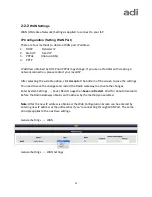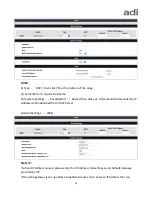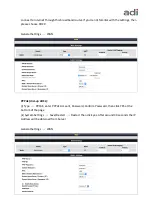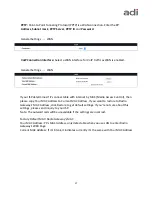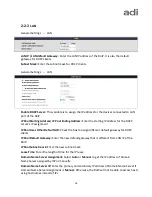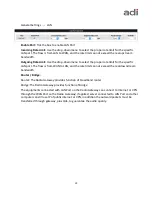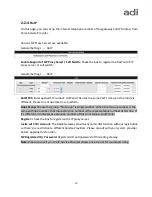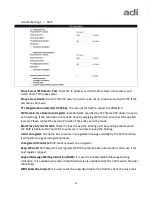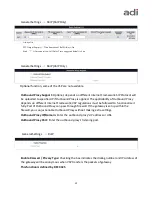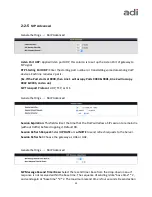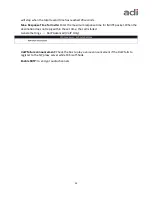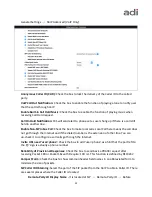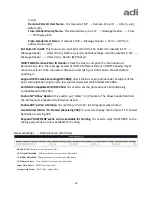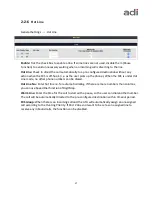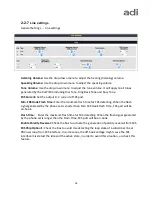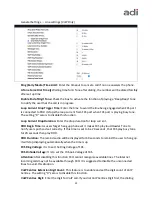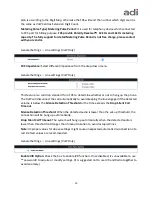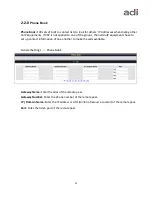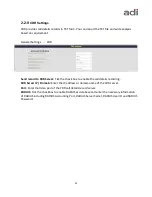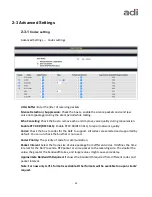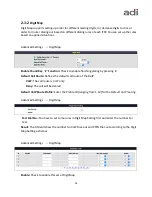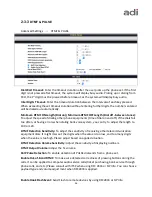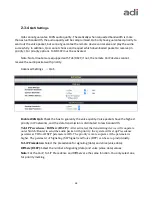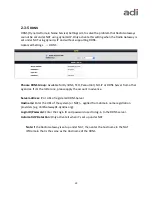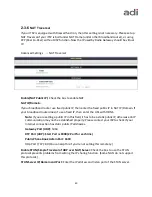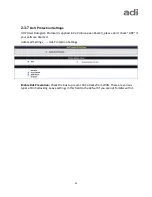
26
[<sip:]
Remote-Party-ID User Name - It is located at SIP
→
Remote-Party-ID
→
After [<sip:],
Before [@]
From-Header Display Name - The standard way is in SIP
→
Message Header
→
From
→
SIP Display info.
From-Header User Name - It locates at SIP -> Message Header -> From -> SIP from
address before [@].
Put Caller ID In URI: This feature is to put Caller ID in URL. The Caller ID is located in SIP
→
Message Header
→
After [From:], Before [<sip:] by default settings. It will be located in SIP
→
Message Header
→
After [<sip:], Before [@]if ticked.
INVITE With Remote-Party-ID Header: Check the box to comprise the information of
Remote-Party-ID in the message header of INVITE. Different format of INVITE header might
cause the call not to be connected. Please consult with your VoIP Service Provider before
enabling it.
Support URI Percent-Encoding(RFC 3986): Check the box to encode/decode the letters of the
basic Latin alphabet, digits, and a few special characters which follow RFC 3986.
Call Hold Compatible With RFC 2543: It is used to set the procedure of Call Hold being
compatible with RFC 2543.
Enable SIP ‘Allow’ Header: It is used to put “Allow” in SIP packets. The Allow header field lists
the SIP requests supported by ITA when ticked.
Enable SDP ‘ptime’ Attribute: It is used to put “ptime” in SDP packets when ticked.
Use Redirect URI As ‘To’ Header (Receiving 3XX): It is used to change the content of ‘To’ header
field when receiving 3XX.
Respond ‘BUSY HERE’ while no line available for hunting: It is used to reply ‘BUSY HERE’ to the
calling party while no line is available for hunting.
General Settings
→
RoIP Advanced (RoIP Only)
Enable VAD:
Check to activate software VAD
VAD Open Threshlod
:
Maximum detective sensitivity of radio audio
VAD Shut Threshold
:
Minimum detective sensitivity of radio audio
VAD Detect Times
:
Time of detective sensitivity of radio audio
Input Gain Detect
:
RoIP Codec input Gain
Output Gain Detect
:
RoIP Codec output Gain



